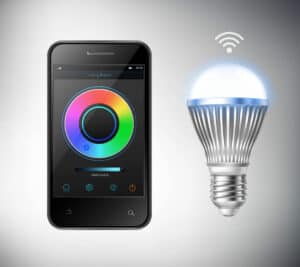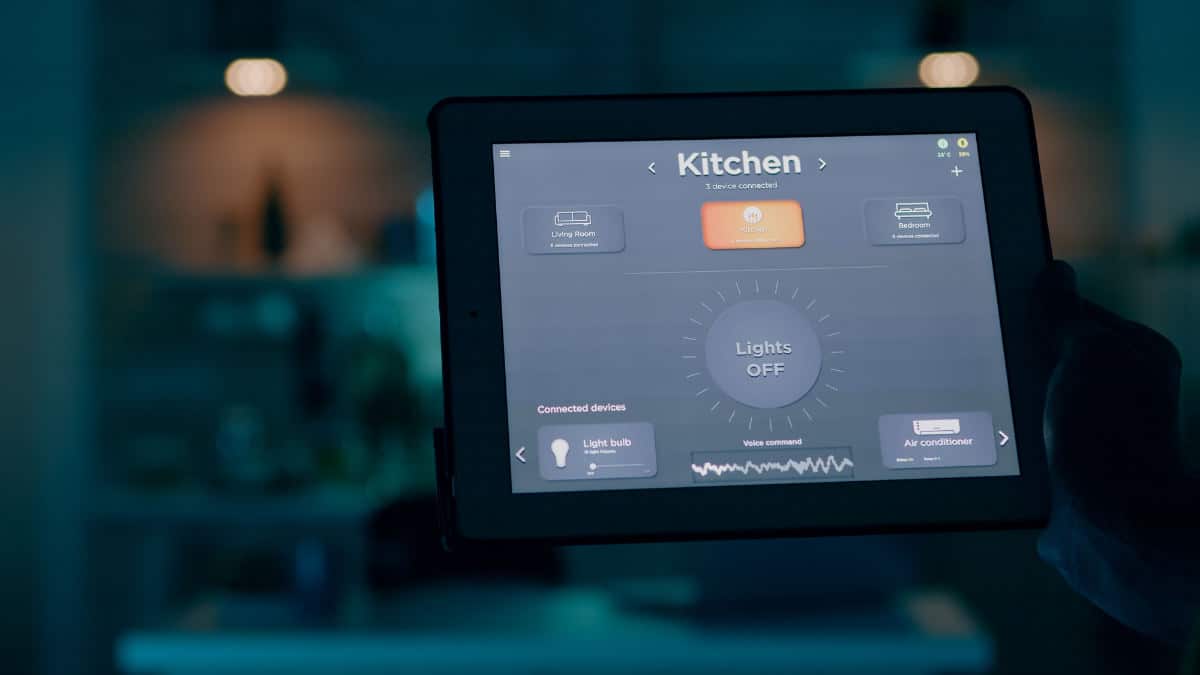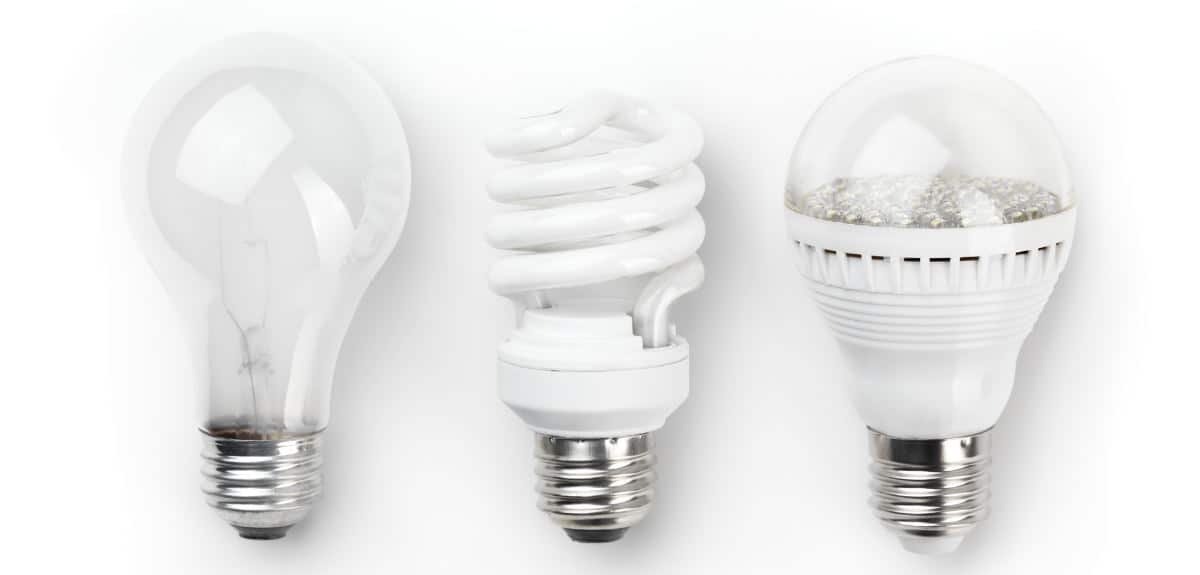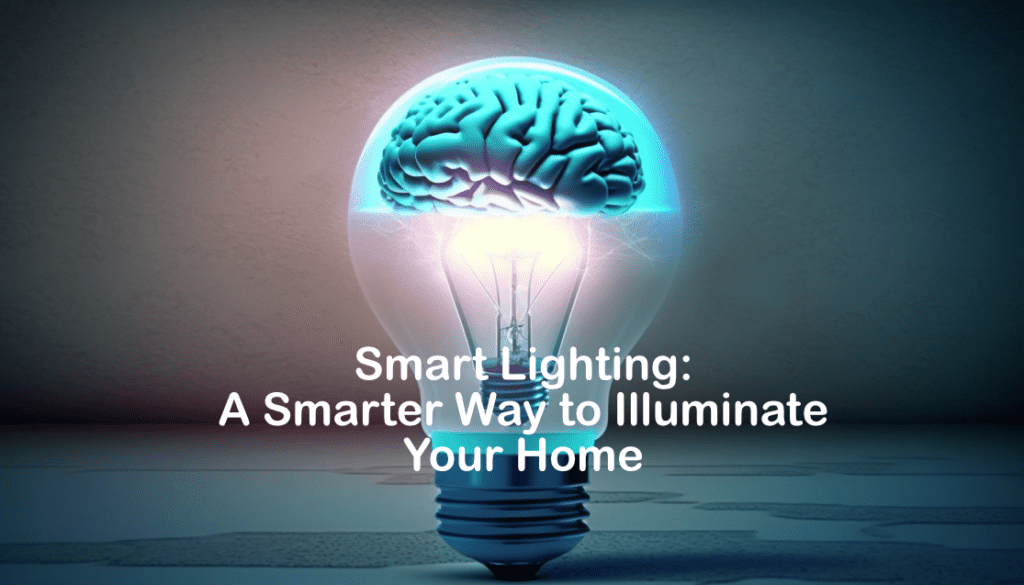Article Summary
Smart lighting is the latest buzz in home automation and for good reason. I cover many features & details, as well as answer common questions, that help explain why adding smart lighting might be the next great addition to your home.
Smart lighting is the latest trend in home automation and it’s not difficult to see why. As a home automation enthusiast, I can confidently say that smart lighting is a trend that deserves all the attention it’s getting given it’s ease of application and the convenience it offers to its users.
For example, if you are wanting the convenience of having your home lights turning ON or OFF at certain times or on a specific schedule, smart lighting is a great solution. Another scenario might be, while on vacation, you get that nagging feeling of dread that you forgot to turn off your living room and bedrooms lights before you left? Well, I know that feeling all too well. With the ability to control and customize the lighting in your home remotely using an app on your phone or through a website account associated with your smart lighting system, that nagging feeling is alleviated in an instance.
Given that smart lighting options have become an essential part of modern living and I finally came to terms with wanting to learn more to see what was really out there and how it could make my life easier or better. My goal was to pull together all of the useful information along with answers to the questions that I myself had.
In this article, I will explore the different types of smart lighting, the benefits of using it, the various features that smart lighting systems offer, and what to consider when choosing a system for your home.
What is Smart Lighting?
Smart lighting refers to lighting that is controlled and automated through a variety of devices such as smartphones, voice-activated assistants, and smart home systems. Smart lighting technology has been around for a few years, but has recently gained momentum, thanks to the advent of low-cost Wi-Fi-connected smart bulbs and the popularity of smart home devices.
The benefits of using smart lighting are numerous, and the technology has the potential to save you money, improve your health and safety, and enhance your overall quality of life. Smart lighting can be used to create the perfect ambiance for any occasion, enhance your home’s security, and reduce your energy bills.
Types of Smart Lighting
There are several types of smart lighting, each with its own unique features and benefits. Here are some of the most common types of smart lighting:
Wi-Fi Enabled Bulbs

Wi-Fi enabled bulbs are the most popular type of smart lighting and perhaps the easiest to implement. They serve as replacement bulbs for existing light fixtures (unscrew the old light bulb and screw in the replacement smart light bulb). They connect directly to your home’s Wi-Fi network and can be controlled using your smartphone or other smart devices. These bulbs come in a variety of colors, brightness levels, and shapes, allowing you to customize your lighting to fit any mood or occasion.
One of the main advantages of Wi-Fi-enabled bulbs is that they do not require a hub or central controller, but instead can be controlled though an app (application) on your smartphone or mobile device or in some case, by accessing a user account using a computer or mobile device web browser. This means that they are very easy to set up and use, and you can control them remotely from anywhere you have access to an internet connection.
Smart Switches
Smart switches are a popular alternative to Wi-Fi enabled bulbs. They replace your traditional light switch and connect to your home’s Wi-Fi network. Smart switches are a great option if you want to keep your existing light fixtures, but still want the convenience and flexibility of smart lighting.
Smart switches can be controlled using a smartphone, voice-activated assistants, or a central controller. Some smart switches also offer dimming capabilities and can be programmed to turn on and off at specific times.
Smart Plugs
Smart plugs are another popular option for implementing smart lighting. They allow you to control your existing light fixtures by simply plugging them into a smart plug and connecting it to your home’s Wi-Fi network. Smart plugs are a great option if you want to control existing lamps or other devices that are not connected to a switch.
Smart plugs can be controlled using a smartphone or voice-activated assistants, and some models also offer scheduling and automation features.
Smart Light Strips
Smart light strips are a great option if you want to add some color or mood lighting to your home. They are flexible strips of LED lights that can be placed under cabinets, behind TVs, or around doorways. Smart light strips are often sold in kits that include a controller and remote, or they can be controlled using a smartphone.
Smart light strips offer a wide range of color options and can be programmed to change colors based on the time of day or to suit your mood.
Smart Lamps
Smart lamps are a great option if you want to add smart lighting to your home, but do not want to replace your existing fixtures. Smart lamps are typically table lamps that are equipped with Wi-Fi connectivity and can be controlled using a smartphone or voice-activated assistants.
Smart lamps come in a variety of styles and colors and can be customized to fit your needs.
Here is a youtube video by Smart Home Solver that goes into detail about comparing smart light switches and smart light bulbs. The video isn’t very long at 5:32 and gives some good insights into why you might want to chose one smart option over the other.
It is a short video, but I have time stamped some important parts of the video for you here. At 0:52 he goes into specifics about the Kitchen, at 2:02 he talks about the Office and Bedroom, and at 3:00 he starts to discuss smart switches in detail.
Benefits of Smart Lighting
The benefits of using smart lighting are numerous. Here are just a few of the most significant advantages of using smart lighting options mentioned above:
Energy Efficiency and Cost Savings
One of the most significant advantages of smart lighting is its energy efficiency. Most smart bulbs use LED technology, which is much more energy-efficient than traditional incandescent bulbs. LED bulbs can last up to 25,000 hours, which is much longer than traditional bulbs. This means that you can save money on your energy bills and reduce your carbon footprint by using smart lighting.

Convenience and Ease of Use
Smart lighting is incredibly convenient and easy to use. With the ability to control your lighting from anywhere, you can turn your lights on and off or adjust their brightness or in some cases, the color, without having to get up from your seat. This is especially useful if you have mobility issues or if you want to control your lighting from another room.
Smart Lighting Customization and Personalization
Smart lighting allows you to customize and personalize your lighting to fit your needs. You can set different lighting scenes for different times of the day or for different occasions. For example, you can set your lights to dim automatically in the evening, or you can set them to change colors during a party.
Improved Security and Safety
Smart lighting can also improve your home’s security and safety. You can program your lights to turn on and off at specific times, which can make it look like someone is at home even when you’re not. You can also use motion sensors to turn on your lights when someone enters a room or to alert you if there is movement outside your home.
Features of Smart Lighting
Smart lighting systems offer a range of features that can enhance your lighting experience. Here are some of the most common features of smart lighting:
Remote Control and Access
Most smart lighting systems allow you to control your lighting remotely. This means that you can turn your lights on and off or adjust their brightness from anywhere in the world as long as you have access to an internet connection. You can also set up schedules and automation rules to control your lights automatically.
Voice Control Through Smart Speakers
Many smart lighting systems are compatible with popular smart speakers such as Amazon Alexa and Google Home. This means that you can control your lights using voice commands. For example, you can say “Alexa, turn off the living room lights” and your lights will turn off.
Scheduling and Automation
Smart lighting systems allow you to set up schedules and automation rules to control your lights automatically. For example, you can set your lights to turn on at sunset and turn off at sunrise. You can also set your lights to turn on and off randomly when you’re away from home to make it look like someone is home.
Color-Changing Capabilities
Many smart lighting systems offer color-changing capabilities. This means that you can change the color of your lights to fit your mood or the occasion. For example, you can set your lights to amber for a relaxing evening or to bright red for a party.
Motion Detection and Other Sensors
Some smart lighting systems come with motion detectors or other sensors. This means that your lights can turn on automatically when someone enters a room or when there is movement outside your home. Some sensors can also detect ambient light levels and adjust your lighting accordingly.

Compatibility with Smart Home Systems
Most smart lighting systems are compatible with popular smart home systems such as Apple HomeKit, Amazon Alexa, and Google Home. This means that you can control your lights using the same app or voice commands that you use to control your other smart home devices.
Smart lighting systems can also be integrated with other smart home devices such as smart thermostats, smart door locks, and security cameras. This means that you can create a comprehensive smart home system that can be controlled from a single app or through a single voice command.
Considerations for Choosing Smart Lighting
When choosing a smart lighting system for your home, there are several factors to consider. Here are some of the most important considerations:
Cost and Budget
Smart lighting can be more expensive than traditional lighting. The cost will depend on the type of smart lighting you choose and the features you need. Before making a purchase, it’s important to consider your budget and decide how much you’re willing to spend.
Compatibility with Existing Fixtures
Before choosing a smart lighting system, it’s important to make sure that it is compatible with your existing light fixtures. Some smart lighting systems require specific types of bulbs or fixtures, so it’s important to check before making a purchase.
Features and Capabilities Needed
Smart lighting systems come with a wide range of features and capabilities. Before choosing a system, it’s important to consider the features that are most important to you. Do you want color-changing capabilities, motion sensors, or voice control? Make sure to choose a system that offers the features you need.
Ease of Installation and Set-Up
Some smart lighting systems are easier to install and set up than others. If you’re not particularly tech-savvy, you may want to choose a system that is easy to install and set up.
Here is another video from Smart Home Solver that I found to be very useful in that he gives you a variety of ideas for smart lighting options that you can setup in your home. The fact that his examples are in a very “regular” and relatable is what I really liked about this video. He keeps the video under 10 minutes and gets right to the point with no fluff.
Here is a breakdown of timestamps for you in case there is a specific thing you want to quickly view over the others. Just click or tap on the timestamp link to go directly to that section of the video: 0:39 Weather Colors, 1:47 Motion Dimming, 2:21 Natural Light by a Robot, 3:10 Middle of the Night Lights, 3:24 Kid Wake Up Time, 3:45 Control Smart Lights with a Switch, 4:48 Family Room Scenes, 5:37 Lutron Aurora doesn’t need the Lutron Hub, 5:51 Timer is Finished, 6:43 Permanent Outdoor Lights, 7:15 Office Scenes, & 7:48 Cool Lamps.
Smart Lighting Frequently Asked Questions
What is required for Smart Lighting?
To set up smart lighting, you typically need smart light bulbs, lighting device or smart switch, a compatible smart home or just a smartphone, tablet or computer to control the lights. Depending on the type of smart lighting you choose, you may also need a Wi-Fi network, a smart speaker (such as Alexa or Google Home), or additional sensors or devices.
What are the disadvantages of Smart Lighting?
Some potential disadvantages of smart lighting include the initial cost, the need for a hub or other devices, and the potential for connectivity issues or software glitches. For smart lighting that requires and internet connection, you can lose connectivity should your internet connection go down. Some smart lighting devices offer in-home (local) connection even if the internet connection fails or is interrupted. Without an active internet connection, remote access is not available.
Is Smart Lighting expensive?
Smart lighting can be more expensive than traditional lighting, but the cost will depend on the type of smart lighting you choose and the features you need. The price of some smart lighting devices can be on par with those of their traditional legacy cousins.
Do smart lights raise electric bill?
Smart lights are generally more energy-efficient than traditional incandescent lighting, which can help to lower your electric bill. However, if you use your smart lights more often or at higher brightness levels than you would with traditional lights, it could increase your electric bill.
Do smart lights need wiring?
Smart bulbs typically do not require any additional wiring, as they can be screwed into existing light fixtures. However, some smart switches or plugs may require additional wiring.
Do smart lights work with normal switches?
Smart lights can work with normal switches, but you may need to leave the switch in the “on” position to ensure that the smart bulb can receive power and be controlled by the app or other devices.
Do smart bulbs use electricity when off?
Some smart bulbs may continue to use a small amount of electricity when they are turned off, as they need to remain connected to the network in order to be controlled by the app or other devices. The amount of electricity they require while off is usually very nominal.
Can smart lights be hacked?
Like any smart device, there is a potential for smart lights to be hacked. However, this risk can be mitigated by choosing a reputable brand, keeping your devices updated with the latest security patches, and using strong passwords.
Do smart bulbs slow down Wi-Fi?
Smart bulbs do require a Wi-Fi connection, which can potentially slow down your network. However, most smart bulbs use very little wi-fi bandwidth, so the impact on your wi-fi network should be minimal.
Can a smart light bulb work as a normal bulb?
Yes, most smart light bulbs can be used as normal bulbs if they are connected to a switch or controlled manually.
What are some popular smart lighting brands?
Some popular smart lighting brands include Philips Hue, LIFX, Sengled, TP-Link Kasa, Geeni, Merkury, Globe and Wyze.

Conclusion
Smart lighting is the present and future of illumination. With its energy efficiency, convenience, and customization capabilities, it’s no wonder that smart lighting has become an essential part of modern living. Whether you’re looking to save money on your energy bills, enhance your home’s security, or create the perfect ambiance for any occasion, there’s a smart lighting system solution out there for you.
When choosing a system, make sure to consider your budget, compatibility with your existing fixtures, the features you need and the ease of installation and set-up. With the right smart lighting system, you can transform your home into a smart and efficient space that meets all your lighting needs.
